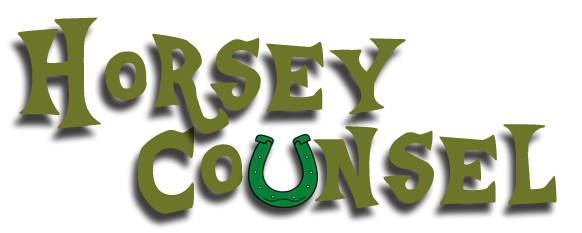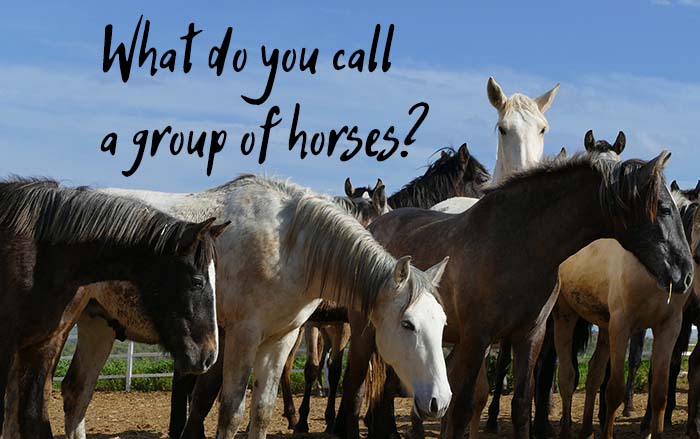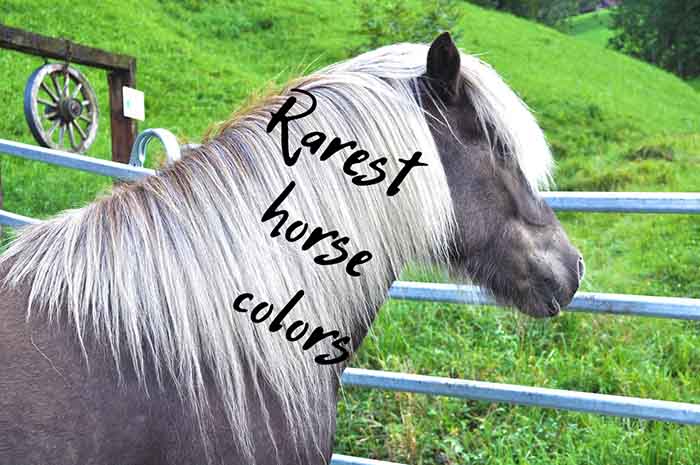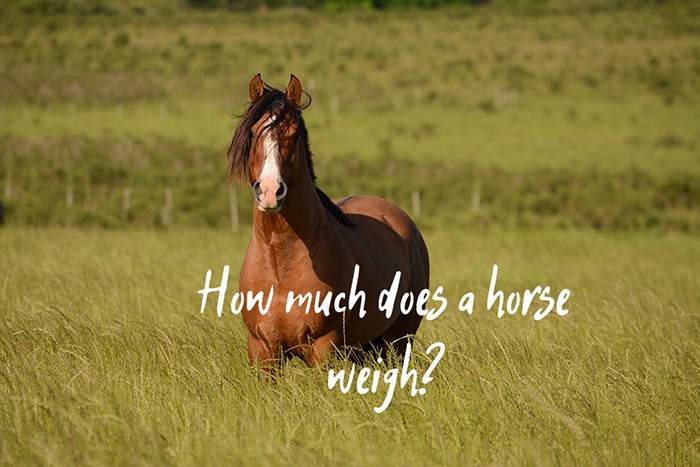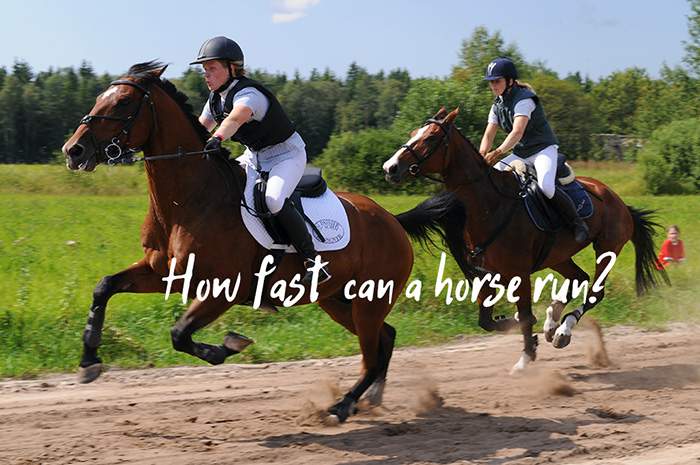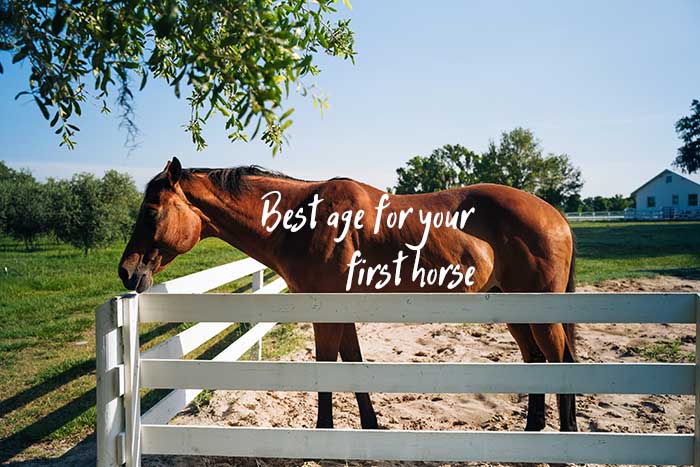How Much Does It Really Cost to Own a Horse?
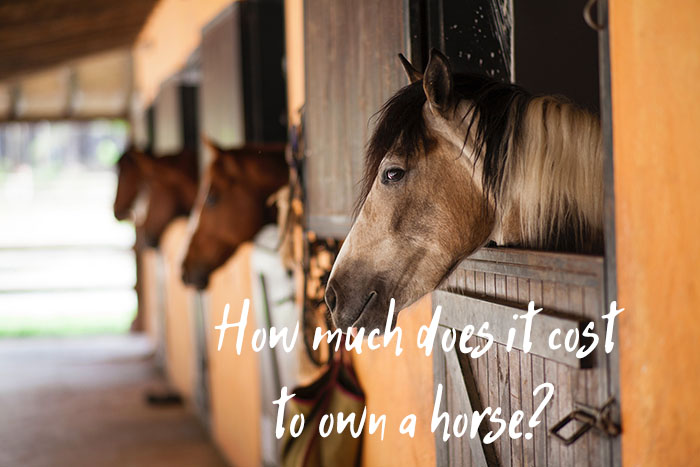
So you’ve decided to buy your first horse and you’re looking around for prices and such. Of course, the cost of a horse varies greatly depending on its breed, age, and fitness, but that’s just the initial purchasing price, of course.
(You can find a comprehensive infographic with most of the information from this article right at the very end. Make sure to check that one out as well!)
If you want to find out how much does it really cost to own a horse, just keep on reading. I plan to break everything down for you and give you a fairly accurate estimate, but for now, I wanted to give you a ballpark figure. According to the American Association of Equine Practitioners (AAEP), you should be prepared to spend at least $3,800 a year on your horse’s needs.
That’s assuming you don’t plan to board the horse. In that case, you’ll spend between $300 – $700 a month for a full-care boarding service. This will take care of all of your horse’s needs, and assuming you manage to find something around the $300 price range, you’ll be set for around $3,600 per year. At $700 a month, though, your costs could add up to $8,400 a year.
Now some of you might get a bit cross with me but I sometimes like to compare buying a horse with buying a car. Sure, you’ll pay an initial price for the official purchase, but actually owning a horse is much more expensive. You’ll need to take care of this beautiful animal day in and day out. You’ll need to provide nutrition for it, exercise it, find a pasture for it to graze on, and a nice and cozy stall or barn for it to sleep in. Visits to the vet and the farrier also need to be taken into account.
And these are just from the top of my head.
How much does it cost to feed a horse?
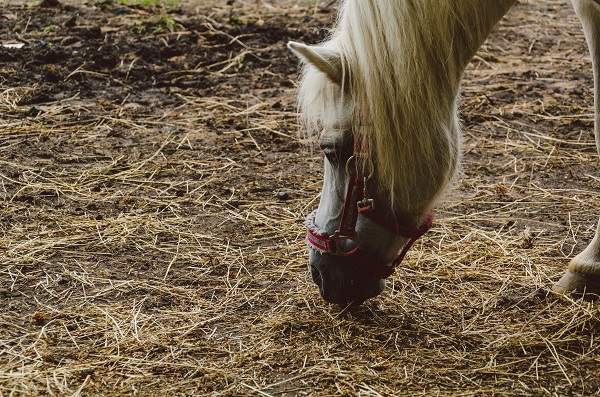
Food is a big part of your annual horsey expenses. Since most horses weigh somewhere at around 1,100 pounds, they need quite a bit of food in order to get through the day. Actually, a horse needs to eat at least 1.5% to 2.5% of its body weight each day. A horse’s digestive system is designed to be in constant motion. Horses always need to rummage on something. That’s why they enjoy spending so much time on a pasture – it’s perfect for them.
All that being said, it will cost you around $1,000 per year in order to feed your horse, assuming you’ll be spending most of that money on bales of hay or bags of grain. If you own a pasture and your horse gets most of its nutritional needs there, you’re obviously going to spend less on food. You still need to provide hay all year round just in case, and especially in the colder months. A pasture doesn’t get you off the hook, sorry.
In general, the feeding budget for your horse should represent around one-third of your annual horse-related spending. Now let’s have a look at each feeding option and how much it costs.
Hay (Square bale $3 – $20 / Round bale $$40 – $120)
Hay is the default choice for feeding horses when they’re in the stall for prolonged periods of time. In the winter months, when vegetation on the pasture dies away, there might not be enough food to sustain your herd or even a single horse. That’s when hay comes into play.
There are two main options for buying hay: square bales or round bales.
- Square bales are intended for feeding a single horse, particularly if the horse is stalled or carried around in a trailer. You can break off square bales into smaller flakes and ration them as you see fit throughout the day. Square hay bales are cheaper, but they’re also smaller when compared to their round counterparts. They’re easier to transport and easier to ration, though.
- Round bales were designed to feed entire herds of horses. They represent a very good option for horses that live on a pasture. Multiple horses can be fed using a single round bale of hay, depending on its size, of course.
You would do well to stock up on hay before wintertime if you don’t want to pay a premium for it. Also, make sure that the hay is cut specifically for horses, and that it doesn’t have any weeds or foxtail in it. These could damage your horse’s digestive system, as well as its mouth. Horses are picky eaters when compared to other livestock. They can’t digest certain plants, and they can get sick if they eat the wrong ones.
Grain (50 lb gran bag $20 – $60)
At a glance, grain is much more expensive than hay, so why would you want to feed grain to a horse anyway? Grain has certain vitamins and minerals that hay or pasture grazing can’t provide, which is why some horse owners choose to add them to their horses’ diets. Moreover, grain can help your horse put on weight, which is why it should be used in moderation.
Depending on the quality of the grain, a 50 lb bag will set you back between $20 and $60. The cheaper variant will have fewer minerals in it, and it will mainly be used to keep your horse full. Remember that if you overfeed your horse with grain, it can get colic.
Food supplements for horses.
Both hay and grain each have their own benefits and nutritional values. Food supplements were designed to enhance the quality of a horse’s food by adding even more vitamins and minerals. These can help your horse prepare for a day of hard work, or they can just improve its overall fitness and well-being.
Many vets recommend food supplements to be added to a horse’s diet. These come in either pellet or powder form. The vet will tell you exactly what to get and how much to put in your horse’s food. Prices vary from brand to brand, and more expensive is not always better in this case. S
Some horse breeds might require certain supplements, while others might not need them at all. Know your horse and its needs so that you may make an informed decision. Again, your vet will also probably know best.
How much does it cost to board a horse?
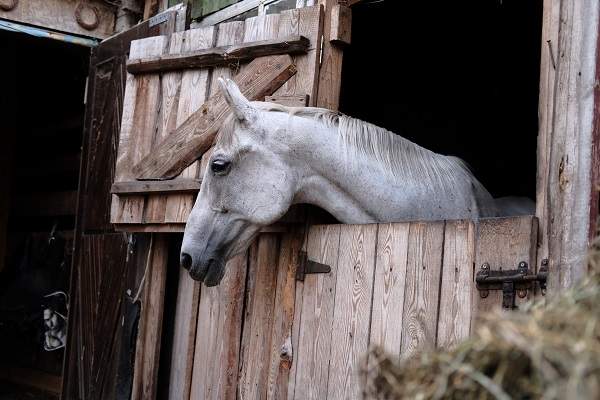
As I mentioned at the beginning of this piece, boarding a horse will set you back between $300 and $700 a month for a full-boarding service. This means that your horse will live the best life that it possibly can at a boarding stable, where staff members will take care of its every need.
There’s also the option of going for a pasture board, which typically costs between $150 to $400 a month. At a pasture board, your horse will still be taken care of by staff members, but your equine will always live on the pasture. It won’t have access to a stall, which might sound a bit disheartening for some horse owners.
It’s important to keep in mind that horses live on pastures in the wild. They graze on grass all day long and feel perfectly content doing so. Obviously, the horse will also benefit from some form of shelter from bad weather and such. If you ask me, pasture boarding offers a great mix of quality around-the-clock horse care, and the freedom to run, graze, and enjoy nature.
There is also a third option, namely a self-care board. This is the cheapest form of horse boarding, as it only costs between $100 to $200 a month on average. At a self-care board, you’re only paying for permission to keep the horse on the property. Not too many stables offer this option, but if you look hard enough, you’re bound to find some that do.
At a self-care board, you’ll be taking care of all of your horse’s needs yourself. You’ll need to provide water and food, including hay for wintertime. Owning a horse and caring for it is a lot of work. The Self-care board takes care of one problem, and that’s space. If you don’t own a farm or a pasture, you’ll definitely want to rent out space for your horse to live in. For all the other stuff, you’ll either need to hire someone or take care of it yourself. It’s hard work, but rewarding work and horses are always worth it.
Visits to the vet and farrier.
Apart from food and boarding, you’ll obviously need to take the vet and farrier into account. Depending on where you live, standard rates for vets and farriers will vary. At any rate, you should be prepared to spend up to $500 per year on veterinarian fees, as well as about $350 for hoof trimming.
Those vet bills are well worth paying, though. Frequent check-ups include tests, vaccinations, and deworming procedures. It’s always worthwhile to stay well informed when it comes to your horse’s overall health. While routing checks are always a good idea, keep in mind that unforeseen illnesses or emergency care could set you back quite a bit as well. That’s why I always keep an emergency fund.
When it comes to shots, some of the most common ones will fight off Rabies, Tetanus, West Nile, Eastern/Western Encephalitis, and Influenza.
Floating a horse’s teeth (up to $200).
Horse’s teeth can become damaged as they go through life, but that’s a normal process that also carries on to other species, humans included. All teeth require some form of maintenance in order to function properly. In horses, these can form sharp edges that can cause ulcers or cuts in the mouth.
Teeth floating involves filing away these sharp edges in order to form flatter surfaces that don’t cause any more damage to the horse’s mouth. After floating, the teeth will allow for improved chewing, and the horse’s overall health will improve.
The bad part is that some horses can misbehave during this process. It does involve a file and a drill, after all, and some of them can get spooked and become agitated. Most of the time, the horse will have to be sedated for the procedure. As for costs, teeth floating in horses costs between $75 to $200 depending on the severity of the damage and the horse’s own demeanor.
The Coggins test ($20 to $70).
The Coggins test determines if your horse has been infected with a virus that causes Equine Infectious Anemia. Since there is no cure for this disease, and since it can be transmitted between horses that live in close proximity, many boarding stables will ask you to have a valid negative Coggins test on file.
The test is done once a year, and it is relatively inexpensive. However, if your horse tests positive for it, it will usually need to be put down, as it will represent a risk of infection for other equines.
The farrier.
As for the farrier, you should never skimp on caring for your horse’s hooves. There are so many things that could go wrong with a horse’s hoof if not cared for properly, that I’m not even going to list them here. I did list them in a previous piece I wrote about hoof care and horseshoes, so make sure to give that one a read if you’re interested.
That $350 I mentioned above is just for hoof trimming, mind you. Applying horseshoes can cost significantly more, around $100 per visit. The price depends on how many hooves you want to be shoed, and sometimes even the quality of the horseshoe itself. Some horseshoes are made of aluminum, others from plastic, and others are steel.
Other Expenses.
Overall, horse owners usually spend around $800 a year on maintenance costs alone.
A healthy horse will set you back around $2,500 if you’re not looking for a particularly expensive breed. If you are, have a look at this piece I put together about the most expensive horse breeds in the world.
Apart from that initial purchasing cost, you’ll need to invest in tack and various supplies for grooming. You’ll need to get a saddle, brushes, girdles, shampoo, blankets, fly masks, feeding trays, and other items that are required to keep your horse in top condition. Furthermore, if you plan to ride your horse, you might need to invest in some training for it. You might also want to invest in some training for yourself if you’re not familiar with horseback riding.
Tack:
- Saddles can cost between a few hundred dollars all the way up to a few thousand. Because I have ridden on both, I can say that the expensive ones are definitely worth it when it comes to comfort and practicality. If you’re just looking for a simple saddle to get the job done, you can go ahead and just spend $200 on it and call it a day. Nothing wrong with that.
- Saddle pads go right beneath the saddle and on the horse’s back. They provide extra support and comfort for the horse, and they’re very important if you ask me. Price-wise, they cost between $25 to $300 in general. The more expensive ones come from well-known brands and are generally of a much higher quality.
- Bridles allow you to control your horse. They cost between $25 to $250, and they include browbands, chin straps, cheek straps, and throatlatches. If you’re lucky, your bridle set will also include the bit and the reins.
- The chinch is what holds the saddle firmly on the horse. You can get these in leather or synthetic materials. naturally, the leather ones will be more expensive, but might also last longer and be more reliable in the long run. Price-wise, a chinch costs between $20 and $120.
While we’re on the subject, you might also be required to buy proper gear for yourself, including helmets, breeches, and gloves. If you only want to use your horse for farm work, then these items are not necessary, and you only need to invest in horse care products.
Then there’s the general maintenance of things. The barn will need cleaning up, and the fencing around the property will need to be kept in great condition at all times. Bedding for your horse will also set you back quite a bit, particularly in the cold months when your horse will be spending more time in the barn.
Conclusion.
Owning a horse is not cheap, but it won’t bankrupt you if you know what to expect. The aforementioned costs are for a single horse alone, so if you plan on owning a herd of them, be prepared to multiply these costs a couple of times.
It’s always a good idea to start off with a single horse if you’ve never owned one before. This way, you’ll get a feel of what’s required to care for it, and you can also figure out if you can afford to keep it. If you can’t, I would advise you to sell the horse instead of neglecting it for lack of funds. A horse will do just fine on its own on a pasture, but it will require vet check-ups and hoof maintenance nonetheless.
While the pure monetary cost of owning a horse might actually seem decent enough for some of you, please take into account invested time as well. The time you’ll spend caring for that horse is valuable enough in its own right, so make sure you’re prepared for this commitment before you actually go out and buy one. If you want to learn more about taking care of a horse on a tight budget, make sure to check out this separate article that I wrote specifically on the subject.
